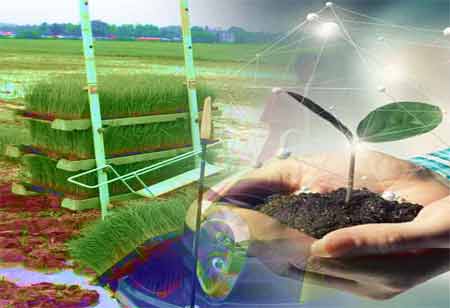Thank you for Subscribing to Agri Business Review Weekly Brief
Soil Health Based Agriculture Management Practices in Crop Protection
Soil health-based agriculture management practices are encouraged to reduce erosion, increase nutrient use efficiency, enhance soil structure, and sustain or increase yields.

By
Agri Business Review | Wednesday, January 18, 2023
Stay ahead of the industry with exclusive feature stories on the top companies, expert insights and the latest news delivered straight to your inbox. Subscribe today.
The crop protection industry can advance soil health by building systems of crop protection innovation that target soil health through direct impact on soil and by enabling practices that promote soil health outcomes.
FREMONT, CA: Soil health-based agriculture management practices are encouraged to reduce erosion, increase nutrient use efficiency, enhance soil structure, and sustain or increase yields. Pest and disease management are less frequently regarded as components of a soil health management system. The crop protection industry can advance soil health by developing systems of crop protection innovation that simultaneously target soil health results, either through direct impact on soil or by facilitating practices promoting soil health outcomes. Such an approach leads to cross-sectoral, integrated agricultural solutions that achieve agronomic, environmental, and economic objectives.
The concept of soil health has united farmers and researchers. Government agencies, non-profits, and the private sector are exploring the possibility that the management of agroecosystems can contribute to solving major environmental issues. Soil health is a multidimensional concept referring to the ability of soil to serve as an ecosystem, sustaining plants and animals while supporting human uses such as agriculture and forestry. Decades of evidence have demonstrated the agronomic and environmental advantages of agricultural practices like cover cropping, reduced tillage, and diversified crop rotations.
Such soil health methods align with the principles of conservation agriculture, including maintaining living plant cover, reducing disturbance, and diversifying crop rotations. Although the benefits of these approaches on soil-derived ecosystem services can vary, there is a significant opportunity to increase their adoption and, thereby, the advantages of agronomic practices reducing erosion and nutrient loss, rebuilding soil carbon, and sustaining agronomic production.
Pest management is a major component of agriculture, with most farmers depending on multiple pest management practices, including insecticides, fungicides, and herbicides. Many of the available chemical, biological, and genetic crop protection solutions increase short-term benefits by avoiding pest damage within a season without targeting long-term soil health results, creating unintentional trade-offs and highlighting the need for innovation. This includes the drastic rise in biological resistance to chemical crop protection products resulting from inadequate product stewardship, which costs huge amounts for farmers.
However, the relationship between crop protection innovation and soil health is rarely discussed. An exception to this is weed management, because reverting to tillage to manage herbicide-resistant weeds would directly reduce soil health, and practises promoting soil health can positively contribute to weed management, such as cover cropping.
Transitioning to a system of crop protection promoting soil health is an underexplored way to achieve long-term agricultural sustainability and productivity. This will require methods of pest management that are compatible with particular soil health practices and also do not degrade the functional capacity of soil communities. There are various development priorities the crop protection community should pursue simultaneously. These innovation opportunities are necessary to capitalise on the potential of soil health to deliver long-term agronomic and environmental advantages.





